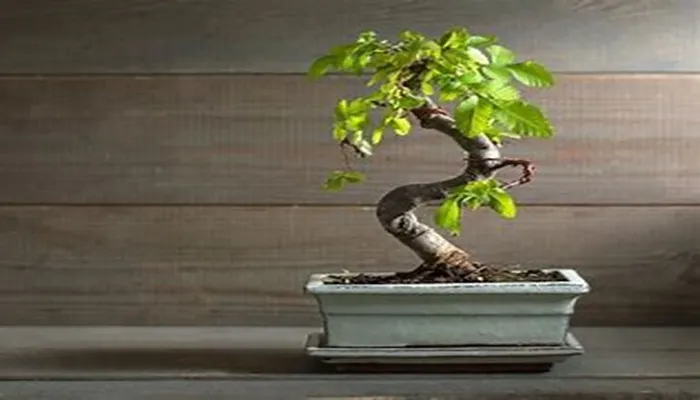Bringing the beauty of bonsai indoors can transform any living space into a serene and green haven. But not all bonsai trees are well – suited to the indoor environment. Indoor conditions, such as temperature, humidity, and light, differ significantly from the outdoors. In this article, we’ll explore some of the best bonsai tree species that can thrive indoors, allowing you to enjoy the art of bonsai cultivation without leaving your home.
Factors to Consider for Indoor Bonsai
Before diving into specific tree species, it’s important to understand the key factors that affect indoor bonsai growth:
1. Light: Most indoor spaces don’t receive as much natural light as the outdoors. Bonsai trees need adequate light for photosynthesis. South – or west – facing windows are ideal, providing bright, indirect light. If natural light is insufficient, artificial grow lights can be used.
2. Humidity: Indoor air tends to be dry, especially during the heating season. Many bonsai trees prefer higher humidity levels. You can increase humidity by using a humidifier, placing the bonsai on a tray filled with water and pebbles, or misting the foliage regularly.
3. Temperature: Indoor temperatures are generally more stable than outdoor ones. However, avoid placing bonsai near heating vents or air conditioners, as sudden temperature changes can stress the trees.
Suitable Bonsai Tree Species for Indoor Cultivation
1. Fukien Tea (Carmona retusa)
Appearance: Fukien Tea has small, glossy leaves and delicate white flowers that are followed by tiny, red fruits. Its trunk often has an interesting, gnarled appearance, adding to its bonsai charm.
Light Requirements: It thrives in bright, indirect light. A few hours of morning or afternoon sunlight through a window is perfect. If the light is too intense, the leaves may get sunburned.
Watering and Humidity: Keep the soil evenly moist, but not waterlogged. Fukien Tea likes high humidity. Misting the leaves daily or placing it on a humidity tray is beneficial.
2. Jade Plant (Crassula ovata)
Appearance: Jade plants have thick, fleshy leaves and a stout, woody trunk. They can be shaped into various bonsai styles, such as formal upright or slanting. Over time, they may produce small, star – shaped white or pink flowers.
Light Requirements: Jade plants need bright light. They can tolerate some direct sunlight, but too much can scorch the leaves. A south – facing window with some shade during the hottest part of the day is ideal.
Watering: This is a succulent, so it has low water requirements. Let the soil dry out completely between waterings. Over – watering can lead to root rot.
3. Chinese Elm (Ulmus parvifolia)
Appearance: Chinese Elm has small, serrated leaves and a rough – textured bark. It can develop a beautiful, aged look with proper pruning and shaping. In the fall, the leaves may turn yellow or orange.
Light Requirements: It needs bright, indirect light. It can tolerate some direct sunlight, but protect it from intense mid – day sun, especially in summer.
Watering and Humidity: Keep the soil moderately moist. Chinese Elm can tolerate a bit of dryness, but regular watering is important. It appreciates higher humidity, so misting or using a humidity tray is helpful.
4. Miniature Fiddle – Leaf Fig (Ficus lyrata ‘Bambino’)
Appearance: A smaller version of the popular fiddle – leaf fig, it has the characteristic large, fiddle – shaped leaves, but in a more compact size suitable for bonsai.
Light Requirements: Prefers bright, indirect light. It can tolerate some low – light conditions, but growth may slow down. Avoid direct sunlight, as it can cause leaf burn.
Watering: Water when the top inch of the soil feels dry. Fiddle – leaf figs are sensitive to over – watering, so make sure the pot has good drainage.
5. Peperomia
Appearance: Peperomia comes in various forms, with thick, often textured leaves. Some have heart – shaped leaves, while others have round or oval ones. They are great for creating a unique and compact bonsai.
Light Requirements: Thrives in bright, indirect light. It can also tolerate lower light levels, making it suitable for rooms with less natural light.
Watering: Peperomia has moderate water needs. Let the soil dry out slightly between waterings. They are sensitive to over – watering, so good drainage is essential.
Care and Maintenance of Indoor Bonsai
1. Pruning and Shaping
Regular pruning is essential to maintain the shape and size of indoor bonsai. Remove dead, diseased, or overgrown branches. Pruning also helps to encourage new growth and a more compact form. Use sharp, clean pruning shears to avoid damaging the tree.
2. Fertilization
Indoor bonsai need nutrients to grow healthy. Use a balanced, water – soluble fertilizer during the growing season (spring and summer). Dilute the fertilizer to half the recommended strength and apply it every 2 – 4 weeks. In fall and winter, reduce or stop fertilization as the tree’s growth slows down.
3. Repotting
Repot indoor bonsai every 1 – 3 years, depending on the growth rate of the tree. Repotting is usually done in early spring, before new growth begins. Choose a slightly larger pot and use a well – draining bonsai soil mix.
Conclusion
Indoor bonsai cultivation is a rewarding hobby that allows you to enjoy the beauty of nature within the comfort of your home. By choosing the right bonsai tree species, providing proper light, humidity, and temperature, and taking good care of your bonsai through pruning, fertilization, and repotting, you can create a stunning indoor garden. Whether you’re a beginner or an experienced bonsai enthusiast, these indoor – friendly bonsai trees offer a wonderful opportunity to express your creativity and connect with nature all year round.


